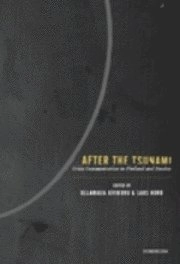

After the Tsunami : crisis communication in Finland and Sweden
- Utgiven: 2009
- ISBN: 9789189471856
- Sidor: 219 st
- Förlag: Nordicom
- Format: Häftad
- Språk: Engelska
Om boken
Åtkomstkoder och digitalt tilläggsmaterial garanteras inte med begagnade böcker
Mer om After the Tsunami : crisis communication in Finland and Sweden (2009)
I oktober 2009 släpptes boken After the Tsunami : crisis communication in Finland and Sweden skriven av Ullamaija Kivikuru, Lars Nord, Jesper Falkheimer, Johanna Jääsaari, Mervi Pantti, Lynn Letukas, Anna Olofsson, John Barnshaw, Maria Hellman, Kristina Riegert, Salli Hakala, Hannele Seeck, Thomas A. Odén, Marina Ghersetti, Ulf Wallin. Den är skriven på engelska och består av 219 sidor djupgående information om media och kommunikation. Förlaget bakom boken är Nordicom.
Köp boken After the Tsunami : crisis communication in Finland and Sweden på Studentapan och spara pengar.
Tillhör kategorierna
Referera till After the Tsunami : crisis communication in Finland and Sweden
Harvard
Oxford
APA
Vancouver



















